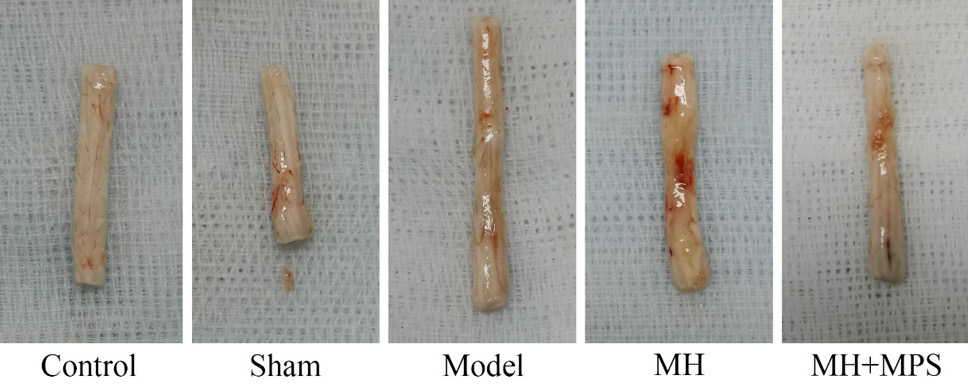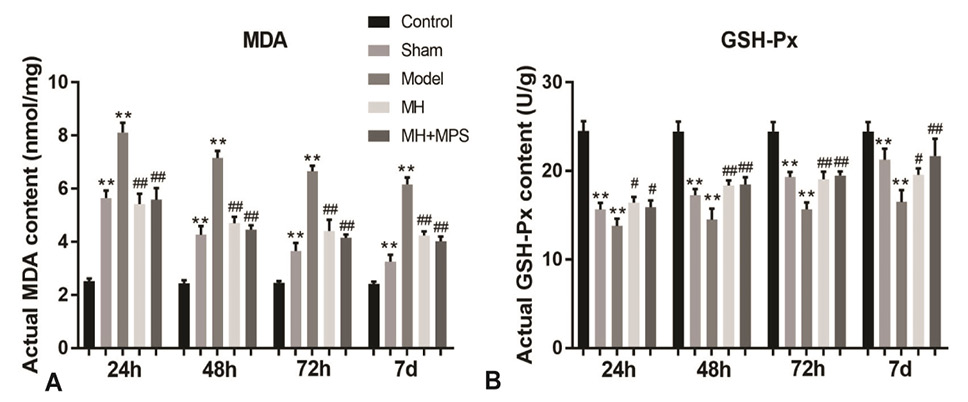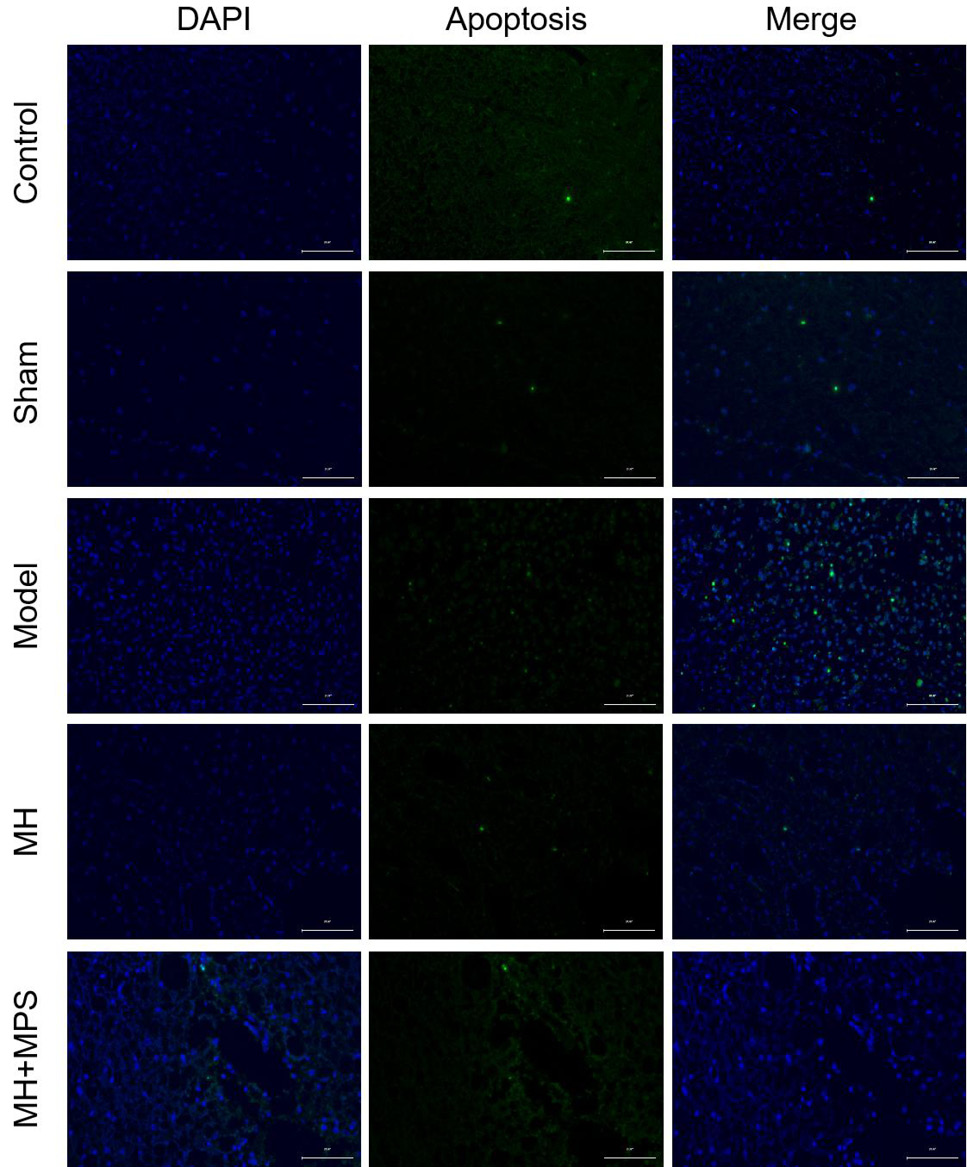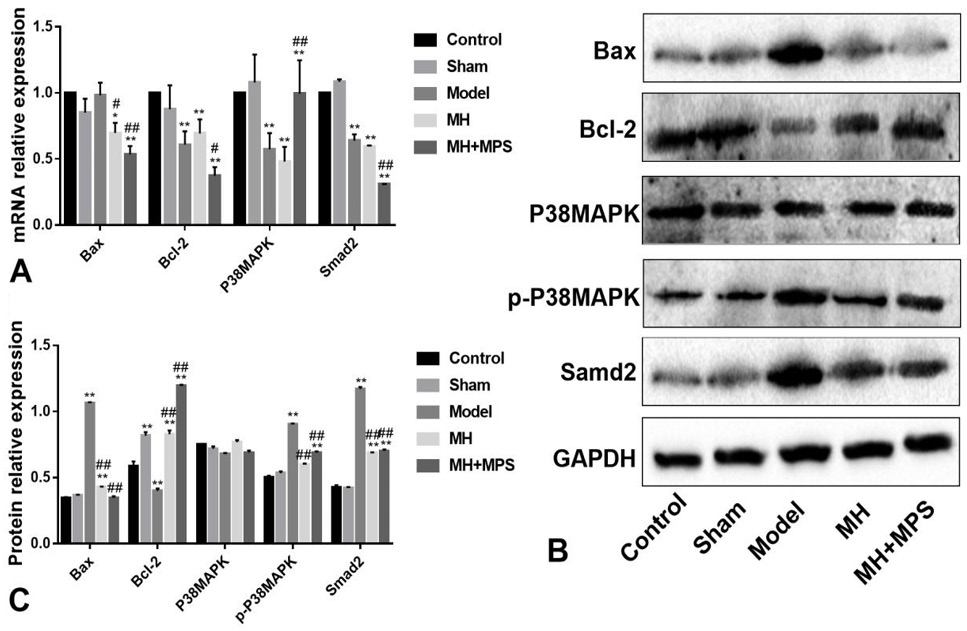The Influence of Mild Hypothermia Plus Methylprednisolone on Nerve Function and Apoptosis by Inhibiting P38AMPK/Smad2 Pathway
The Influence of Mild Hypothermia Plus Methylprednisolone on Nerve Function and Apoptosis by Inhibiting P38AMPK/Smad2 Pathway
Lihang Wang, Qiling Chen, Tingsheng Lu, Shudan Yao, Xingwei Pu and Chunshan Luo*
Spinal cord of each group 7 d after surgery. MH, mild hypothermia; MH+MPS, mild hypothermia plus methylprednisolone.
Effect of hypothermia and methylprednisolone on TNF-α, IL-6 and IL-8 of spinal cord during treatment of spinal injury. For Abbreviations, see Fig. 1. **P < 0.01 vs. the control; ## P < 0.01 vs. the model.
Effect of hypothermia and methylprednisolone on MDA (A) and GSH-Px (B) content in spinal cord during treatment of spinal injury. For Abbreviations, see Fig. 1. ** P < 0.01 vs. the control; ## P < 0.01 vs. the model.
Effect of hypothermia and methylprednisolone on apoptosis of cells (Tunel staining) in spinal cord during treatment of spinal injury. For Abbreviations, see Fig. 1.
Effect of hypothermia and methylprednisolone on apoptosis of cells (Flow cytometry) in spinal cord during treatment of spinal injury. For Abbreviations, see Fig. 1.
Expression levels of P38AMPK/Smad2 pathway proteins in spinal cord during treatment of spinal injury. A: RT-qPCR to assay apoptosis-related gene and P38AMPK/Smad2 pathway gene. B-C: Western blot to assay apoptosis-related and P38AMPK/Smad2 pathway proteins. For Abbreviations, see Fig. 1. * P < 0.05, ** P < 0.01 vs. the control, # P < 0.05, ## P < 0.01 vs. the model.















